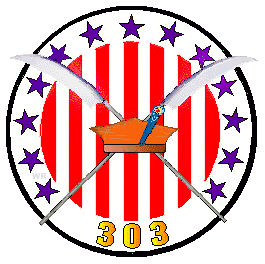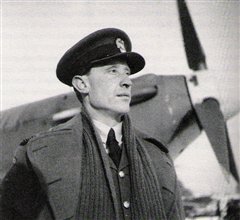Post by franciszek on Apr 27, 2008 20:34:15 GMT 1
There used to be many poles in the seaside resort of Blackpool as there is a international airport there now but i believe there was squadrons of Lancaster bombers with poles as crews there was a hotel near the pleasure beach the owners father was such a crew member i stayed there many years ago and there was a signed painting by all the crew members i found it very humbling sadly it has closed recently
Merged post
from online sources:
The Polish Air Force fought in the Battle of France as one fighter squadron GC 1/145, several small units detached to French squadrons, and numerous flights of industry defence (in total, 133 pilots, who achieved 53-57 victories at a loss of 8 men in combat, what was 7,93% of allied victories)[10].
Later, Polish pilots fought in the Battle of Britain, where the Polish 303 Fighter Squadron claimed the highest number of kills of any Allied squadron. From the very beginning of the war, the Royal Air Force (RAF) had welcomed foreign pilots to supplement the dwindling pool of British pilots. On 11 June 1940, the Polish Government in Exile signed an agreement with the British Government to form a Polish Army and Polish Air Force in the United Kingdom. The first two (of an eventual ten) Polish fighter squadrons went into action in August 1940. Four Polish squadrons eventually took part in the Battle of Britain (300 and 301 Bomber Squadrons; 302 and 303 Fighter Squadrons), with 89 Polish pilots. Together with more than 50 Poles fighting in British squadrons, a total of 145 Polish pilots defended British skies. Polish pilots were among the most experienced in the battle, most of them having already fought in the 1939 September Campaign in Poland and the 1940 Battle of France. Additionally, prewar Poland had set a very high standard of pilot training. The 303 Squadron, named after the Polish-American hero, General Tadeusz Koœciuszko, claimed the highest number of kills (126) of all fighter squadrons engaged in the Battle of Britain, even though it only joined the combat on August 30, 1940[11] These 5% of Polish pilots were responsible for 12% of total victories in the Battle.

The Polish Air Force also fought in 1943 in Tunisia (Polish Fighting Team, so called "Skalski's Circus") and in raids on Germany (1940-45). In the second half of 1941 and early 1942, Polish bomber squadrons were the sixth part of forces available to RAF Bomber Command (later they suffered heavy losses, with little replenishment possibilities). Polish aircrew losses serving with Bomber Command 1940-45 were 929 killed. Ultimately 8 Polish fighter squadrons were formed within the RAF and had claimed 629 Axis aircraft destroyed by May 1945. By war's end, there were 14,000 Polish airmen in 15 RAF squadrons and in the United States Army Air Forces (USAAF).

Polish squadrons in the United Kingdom:
No. 300 "Masovia" Polish Bomber Squadron (Ziemi Mazowieckiej)
No. 301 "Pomerania" Polish Bomber Squadron (Ziemi Pomorskiej)
No. 302 "City of Poznañ" Polish Fighter Squadron (Poznañski)
No. 303 "Koœciuszko" Polish Fighter Squadron (Warszawski imienia Tadeusza Koœciuszki)
No. 304 "Silesia" Polish Bomber Squadron (Ziemi Œl¹skiej imienia Ksiecia Józefa Poniatowskiego)
No. 305 "Greater Poland" Polish Bomber Squadron (Ziemi Wielkopolskiej imienia Marsza³ka Józefa Pi³sudskiego)
No. 306 "City of Toruñ" Polish Fighter Squadron (Toruñski)
No. 307 "City of Lwów" Polish Fighter Squadron (Lwowskich Puchaczy)
No. 308 "City of Kraków" Polish Fighter Squadron (Krakowski)
No. 309 "Czerwieñ" Polish Fighter-Reconnaissance Squadron (Ziemi Czerwieñskiej)
No. 315 "City of Dêblin" Polish Fighter Squadron (Dêbliñski)
No. 316 "City of Warsaw" Polish Fighter Squadron (Warszawski)
No. 317 "City of Wilno" Polish Fighter Squadron (Wileñski)
No. 318 "City of Gdañsk" Polish Fighter-Reconnaissance Squadron (Gdañski)
No. 663 Polish Artillery Observation Squadron
Polish Fighting Team (Skalski's Circus)
Polish Fighter Squadron 303 Spitfire

303 Fighter Squadron Insignia (Tadeusz Kosciuszko Sq.)

Here is a link to many stories about Polish Air aces:
www.elknet.pl/acestory/poland.htm
I remember when I visited Berlin about 6 years ago. My brother-in-law and I went to pay our respects to the Allied WWII Cemetery and I remember seeing several Polish burials there. It seems there were perhaps a few Bombers shot down over Berlin with Polish crews aboard.
They certainly have my respect,
Jim
Merged post
from online sources:
The Polish Air Force fought in the Battle of France as one fighter squadron GC 1/145, several small units detached to French squadrons, and numerous flights of industry defence (in total, 133 pilots, who achieved 53-57 victories at a loss of 8 men in combat, what was 7,93% of allied victories)[10].
Later, Polish pilots fought in the Battle of Britain, where the Polish 303 Fighter Squadron claimed the highest number of kills of any Allied squadron. From the very beginning of the war, the Royal Air Force (RAF) had welcomed foreign pilots to supplement the dwindling pool of British pilots. On 11 June 1940, the Polish Government in Exile signed an agreement with the British Government to form a Polish Army and Polish Air Force in the United Kingdom. The first two (of an eventual ten) Polish fighter squadrons went into action in August 1940. Four Polish squadrons eventually took part in the Battle of Britain (300 and 301 Bomber Squadrons; 302 and 303 Fighter Squadrons), with 89 Polish pilots. Together with more than 50 Poles fighting in British squadrons, a total of 145 Polish pilots defended British skies. Polish pilots were among the most experienced in the battle, most of them having already fought in the 1939 September Campaign in Poland and the 1940 Battle of France. Additionally, prewar Poland had set a very high standard of pilot training. The 303 Squadron, named after the Polish-American hero, General Tadeusz Koœciuszko, claimed the highest number of kills (126) of all fighter squadrons engaged in the Battle of Britain, even though it only joined the combat on August 30, 1940[11] These 5% of Polish pilots were responsible for 12% of total victories in the Battle.

The Polish Air Force also fought in 1943 in Tunisia (Polish Fighting Team, so called "Skalski's Circus") and in raids on Germany (1940-45). In the second half of 1941 and early 1942, Polish bomber squadrons were the sixth part of forces available to RAF Bomber Command (later they suffered heavy losses, with little replenishment possibilities). Polish aircrew losses serving with Bomber Command 1940-45 were 929 killed. Ultimately 8 Polish fighter squadrons were formed within the RAF and had claimed 629 Axis aircraft destroyed by May 1945. By war's end, there were 14,000 Polish airmen in 15 RAF squadrons and in the United States Army Air Forces (USAAF).

Polish squadrons in the United Kingdom:
No. 300 "Masovia" Polish Bomber Squadron (Ziemi Mazowieckiej)
No. 301 "Pomerania" Polish Bomber Squadron (Ziemi Pomorskiej)
No. 302 "City of Poznañ" Polish Fighter Squadron (Poznañski)
No. 303 "Koœciuszko" Polish Fighter Squadron (Warszawski imienia Tadeusza Koœciuszki)
No. 304 "Silesia" Polish Bomber Squadron (Ziemi Œl¹skiej imienia Ksiecia Józefa Poniatowskiego)
No. 305 "Greater Poland" Polish Bomber Squadron (Ziemi Wielkopolskiej imienia Marsza³ka Józefa Pi³sudskiego)
No. 306 "City of Toruñ" Polish Fighter Squadron (Toruñski)
No. 307 "City of Lwów" Polish Fighter Squadron (Lwowskich Puchaczy)
No. 308 "City of Kraków" Polish Fighter Squadron (Krakowski)
No. 309 "Czerwieñ" Polish Fighter-Reconnaissance Squadron (Ziemi Czerwieñskiej)
No. 315 "City of Dêblin" Polish Fighter Squadron (Dêbliñski)
No. 316 "City of Warsaw" Polish Fighter Squadron (Warszawski)
No. 317 "City of Wilno" Polish Fighter Squadron (Wileñski)
No. 318 "City of Gdañsk" Polish Fighter-Reconnaissance Squadron (Gdañski)
No. 663 Polish Artillery Observation Squadron
Polish Fighting Team (Skalski's Circus)
Polish Fighter Squadron 303 Spitfire

303 Fighter Squadron Insignia (Tadeusz Kosciuszko Sq.)

Here is a link to many stories about Polish Air aces:
www.elknet.pl/acestory/poland.htm
I remember when I visited Berlin about 6 years ago. My brother-in-law and I went to pay our respects to the Allied WWII Cemetery and I remember seeing several Polish burials there. It seems there were perhaps a few Bombers shot down over Berlin with Polish crews aboard.
They certainly have my respect,
Jim









